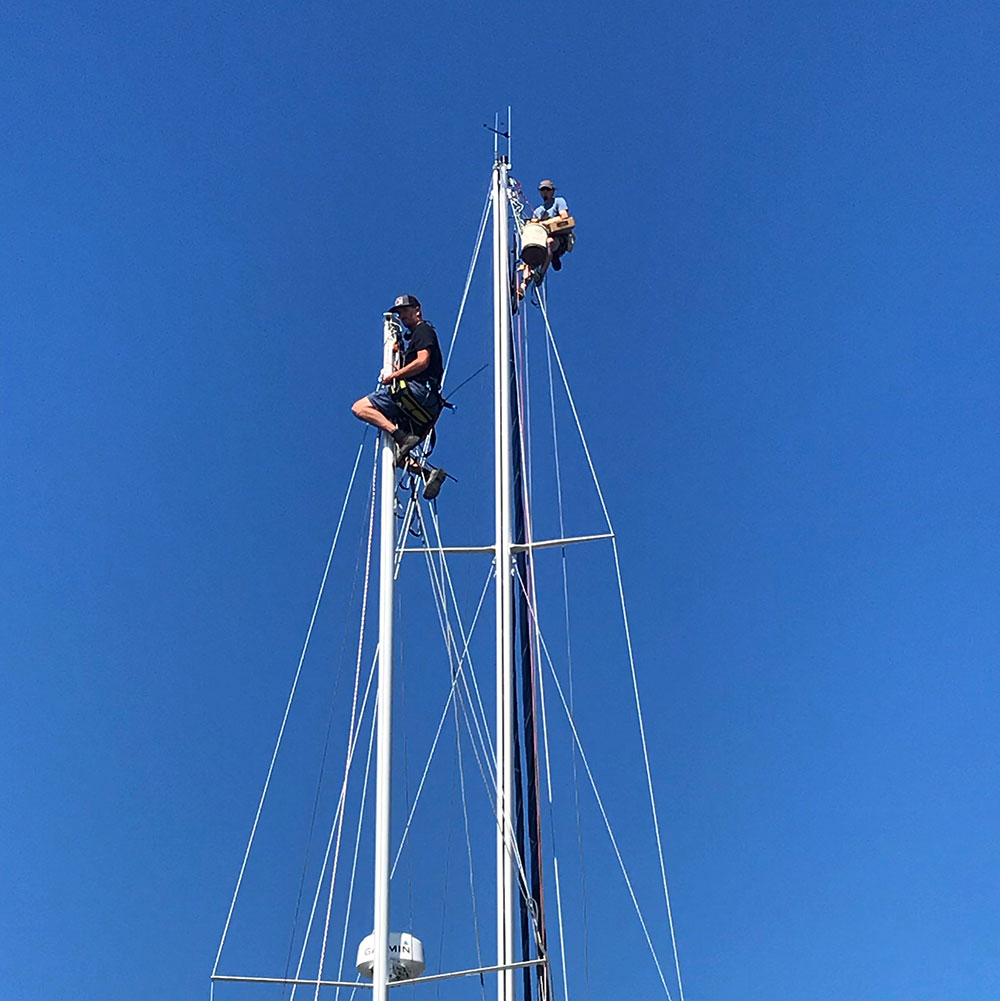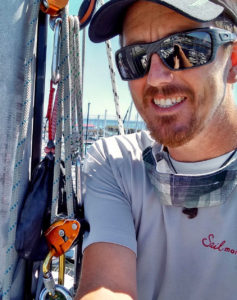As the presenting sponsor of the SARC, PTR Rigging and Spars is committed to serving the racing community, helping increase knowledge and understanding, and improving every sailor’s experience on the water. This article from the 2021 SARC is content sponsored by the good folks at PTR.
Before you and your race crew cast off dock lines and enter a starting sequence this spring, prudence dictates some pre-race boat work.
A thorough check of your boat’s various rigging components is critical for both performance and safety. Use this list to help make sure you’ve covered all of your bases:
Mast
Look the mast over from top to bottom.
Check the spar tube for cracks. Examine the mast base for corrosion and drainage. Ensure no rivets or screws are missing from the sail track. The main sail should move freely up and down the track.
Spreaders should be checked for proper fit without excessive play. They should be even in orientation, vertically and from side to side. Chafe gear at spreader ends should be removed routinely and replaced after inspection of the spreader ends and wires. Leather is best for chafe gear so use tape sparingly to avoid encouraging corrosion.
The mast should be in column and have proper tension for good sail shape and mast support. Rake should be measured as per class and or sail design. Tension should be even port and starboard.

Standing Rig
Turnbuckles should be free to move for adjustment. Check all turnbuckles and clevis pins for fully bent cotter pins that are tucked into the fitting to avoid sail and line damage. Terminals should be free of cracks, bends, and mechanical damage. Clevis pins should have full bearing and be exactly sized for the bore. If daylight is clearly visible along the lower edge of tang or chainplate, the pin might be too small. Check the chainplates for corrosion, proper pin bearing, leaks and cracks. Chainplates should be aligned with the turnbuckles and shrouds.
Rig tape should allow water to drain.
The backstay turnbuckle or adjuster should be functional for mast stability, main sail flattening, mast and sail shape.
The wind indicator should be properly aligned and operational.
All cars and blocks should move freely. All non-locking shackles aloft should be moused to discourage pins backing out. A cable tie will work in a pinch but seizing wire is best. All fittings aloft should be inspected for cotter pins.
Check the vang bracket and boom gooseneck for play and bore elongation.
Ensure that all mast lights are working. Radio check to test the antenna.
Drag and Friction
A clean rig will have less drag. Wash and wipe it all down, and lubricate moving parts.
Take time to understand and isolate the friction. For a halyard, it is best to start by removing the halyard from any clutch or turning block. Grasping both the fore and aft sides of the halyard pull it up and over the mast sheave, feeling for resistance and friction. Do the same exercise at each block and exit.
Proper line type and size is critical to operation of sheaves, blocks, clutches, and winches. It’s also one of the simplest ways to decrease drag.
A common mistake is to oversize the line so that it can be easily grasped. This has potential to create more drag; which thus requires even more grip. The goal is to have the line run through the hardware smoothly and easily. Assuming the hardware, block, clutch, and winch are correctly sized for the application — a good general rule is to favor the smaller line sizes that the manufacturer recommends. The best source of reliable information about line choice and size are the line and hardware manufacturers’ websites.

Line Chafe
Look for chafe especially on lines that might only be used in breezy conditions. This includes reef lines, vang, cunningham, and furling lines.
Pay special attention to halyard chafe where it enters and exits a clutch. This is especially important for cockpit-led spinnaker halyards, which are susceptible to loaded drop.
Lifelines
1×19 uncoated stainless cable is durable, inspectable, dependable, and overall is the best value for the least amount of maintenance.
- Pro Tip – lifelines will last far longer if you do not tie fenders or anything else to them and limit weight on them when hiking, if possible.
Minimize tape over any stainless steel fittings. Closed body turnbuckles create a smooth surface with less chafe and are best reserved for lifelines.
Make sure all fittings have been treated with red thread lock to avoid coming loose through vibration and use.
Split rings should be completely closed or lightly taped to avoid being caught by sheets.
If using dyneema lifelines, inspect for chafe and replace if necessary.

Miscellaneous
Winches should be routinely cleaned and serviced as per the manufacturer’s direction.
Carry a jury rig kit for for emergency repairs.
Nobody wants their sailboat to accidentally become a motorboat. Masts are expensive, difficult, and complex to replace. Periodic rig inspections by a professional are highly recommended and can be good value, especially before or soon after purchase. Use the inspection to create a prioritized punch list of items to address before racing and for future maintenance and care of the rig.
By Scott Galbraith, Rigging Tech at PTR Rigging and Spars. This article was provided as a part of a PTR’s paid package as the Presenting Sponsor of the SARC.






